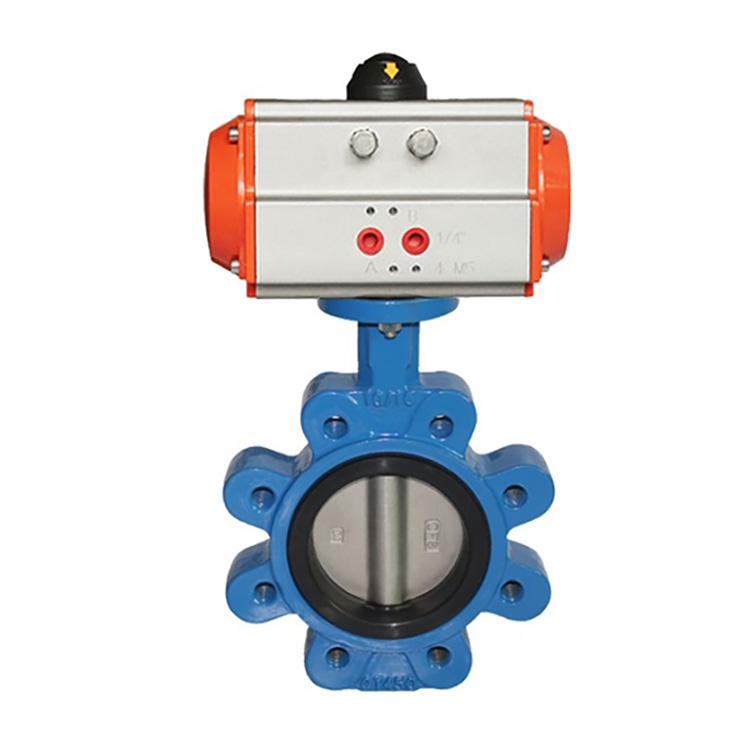Components and Operation of Lug Butterfly Valve With Pneumatic Actuators
2024-03-30
A lug butterfly valve with a pneumatic actuator combines the features of a lug type butterfly valve with the functionality of a pneumatic actuator for automated operation. Here's an overview of its key components and operation:
1. Lug Butterfly Valve: This type of valve features a disc (butterfly) that rotates around a central axis to control the flow of fluid through the valve. The lug design refers to the threaded or bolted lugs on the valve body, which allow for secure attachment to the piping system without the need for additional flange bolts.
2. Pneumatic Actuator: The pneumatic actuator is a device that converts pneumatic energy (compressed air) into mechanical motion to operate the valve. It typically consists of a piston or diaphragm housed in a cylinder, along with control valves and position feedback devices.
3. Operation: The pneumatic actuator is attached to the valve stem or shaft and is responsible for opening and closing the valve. When air pressure is applied to the actuator, it creates a force that moves the valve disc to the desired position (open or closed). The actuator's control valves regulate the flow of air to the actuator, allowing for precise control of the valve position.
4. Control System: A control system is used to regulate the operation of the pneumatic actuator, typically using signals from a control panel or a process control system. The control system can be programmed to automate the valve operation based on predetermined parameters such as pressure, temperature, or flow rate.
5. Position Feedback: Some pneumatic actuators include position feedback devices, such as limit switches or positioners, to provide feedback on the valve's position. This information is used to monitor the valve status and ensure accurate control of the process.
6. Advantages: The combination of a lug butterfly valve with a pneumatic actuator offers several advantages. It provides reliable and efficient flow control, with the added benefits of automation, remote operation, and precise positioning. Pneumatic actuators are often preferred for applications requiring rapid response, high cycling rates, or integration with control systems.
7. Applications: Lug butterfly valves with pneumatic actuators are commonly used in industries such as oil and gas, petrochemical, water treatment, HVAC, and process industries. They are suitable for various fluid handling applications, including on-off control, throttling, and modulating flow.
8. Maintenance and Service: Regular maintenance and inspection of the pneumatic actuator and valve are essential to ensure reliable operation and prevent downtime. This may include lubrication, seal replacement, and calibration of control devices.
Overall, lug butterfly valves with pneumatic actuators offer a versatile and reliable solution for automated flow control in industrial processes, combining the benefits of a robust valve design with the efficiency of pneumatic automation.



